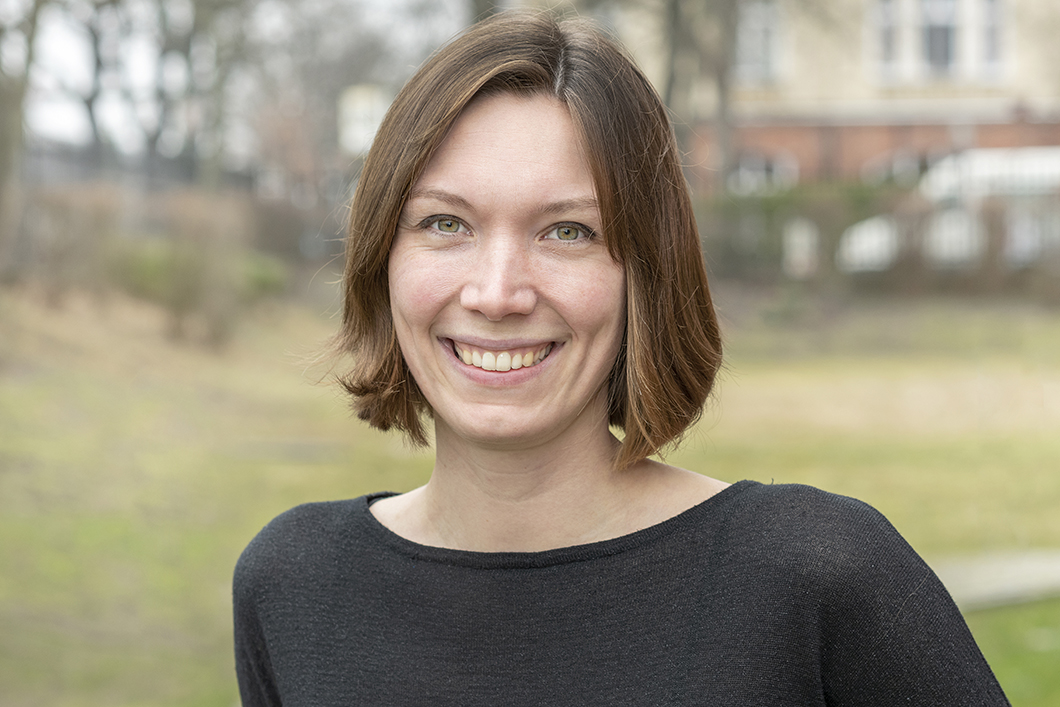
Source: BAM
Interview Series "Introducing People@BAM"
Lena Meyer, Advanced Multi-Materials Processing Division
Lena, tell us a bit about yourself. What did you do in "your life before BAM" or how did you come to BAM?
I studied production engineering and materials science at the University of Bremen and came to 3D printing and additive manufacturing via research assistant positions. I wrote my Master's thesis at the Fraunhofer Institute for Manufacturing Technology and Advanced Materials in the field of 3D printing of a nickel-based superalloy for potential aerospace applications. After graduating, I moved abroad and worked in Australia in the field of 3D printing of small satellite components. In one project we developed a component using two metals and two different 3D printing processes to cover the requirements for the satellite application and this component has been flying in space since March 2021. It was exciting that I also worked in the area of flight operations during this mission, i.e. how to test, qualify and operate the spacecraft. After three years in "Down Under" it was time to return to Germany and when I saw the job advertisement at BAM, it was just a great fit. The topic was 3D printing for applications and manufacturing in space under reduced gravity and I was really excited to apply.
What inspired you to pursue a career in science?
I have not specifically pursued a career in science. Working on fascinating topics and in multidisciplinary teams is really exciting, and that is why I have worked a lot in research and technology development. It is very interesting to be involved in new technologies and to experience the technological, international and cultural exchange in the field of research.
What is your research focus and what particularly fascinates you about it?
We are developing a 3D printing process that can process powdery materials in microgravity. Without gravity, powder particles would simply float around. Our process prevents this by using a gas flow, which in turn creates an additional force in a similar direction to gravity. This stabilises the powder particles and allows them to be processed. There are many parameters and phenomena that need to be evaluated in this area. What is particularly exciting is that we also test the process in microgravity during a parabolic flight campaign – where we experience weightlessness ourselves.
What does weightlessness feel like?
A parabolic flight is different compared to what we know about life on the ISS. We are in weightlessness - or microgravity – several times during the flight and every time this lasts for about 20-25 seconds. Before and after the microgravity phase we have 20 seconds of "hyper gravity": 2g, which is approximately twice the normal gravity. While this can be exhausting, the phases of weightlessness are very cool. You are floating and very small movements are enough to float through the area. The most exciting part of our experiment is of course also during this phase, as we apply our powder layer in the 3D printer during the microgravity phase.
This year, you and your team had the opportunity to present your research results at the International Conference on Advanced Manufacturing for Air, Space and Land Transportation (ICAM22). What kind of conference is it and what did you present?
The conference was organised by NASA and ESA to bring together the space sector with topics such as materials science, manufacturing technologies and digitalisation. Scientific and technological discussions were focused on strategies to produce components on space missions or on the moon. Our team from BAM presented the development steps and latest results of our 3D printing process for metallic powders for microgravity applications.
What is planned next?
We will analyse the results from this year's parabolic flight campaign and derive next steps from these findings. In addition, our process is meant to work in long periods of weightlessness in the future. Sounding rockets are a suitable platform for further tests since they reach an altitude of about 260 km and only re-enter the Earth's atmosphere after more than 6 minutes in microgravity. We already conducted initial tests with the DLR Institute for Material Physics in Space in Cologne. Through experiments on the rockets, the process can be further adapted for long-term use in space.
What do you do when you're not researching?
After three years in Australia, I enjoy meeting up with friends again and spending time with family. I am also new to Berlin, so there is a lot to discover, like the many different swimming pools and going on bike tours along the ‘Mauerweg’ and in the area around Berlin.
If you had to describe your work at BAM in one word or phrase - what would it be?
Weightless


